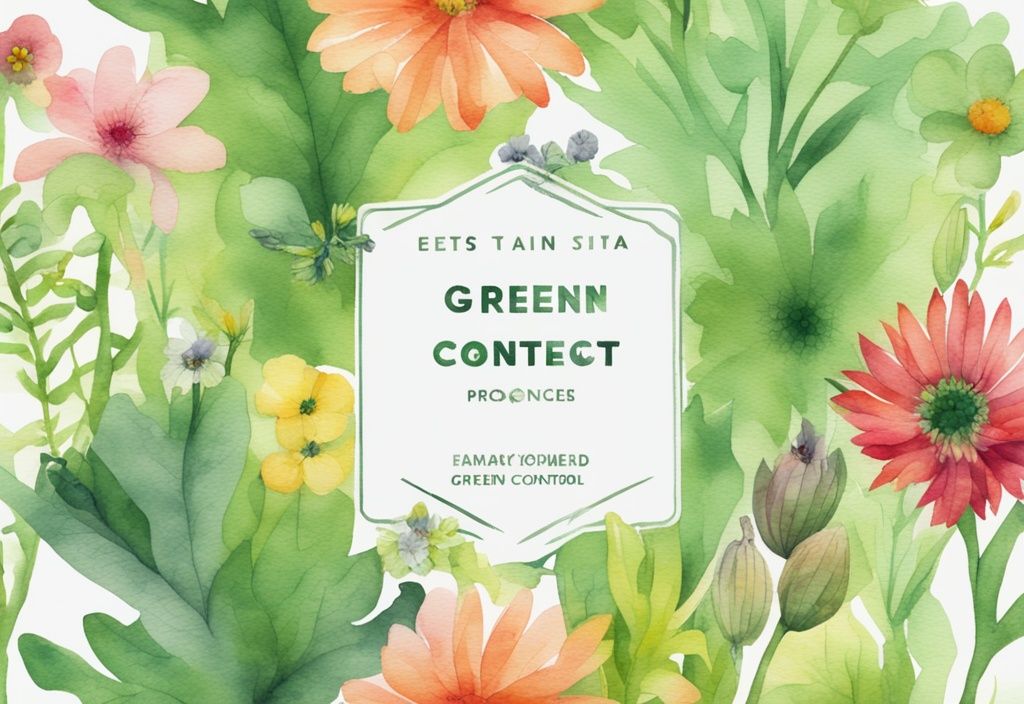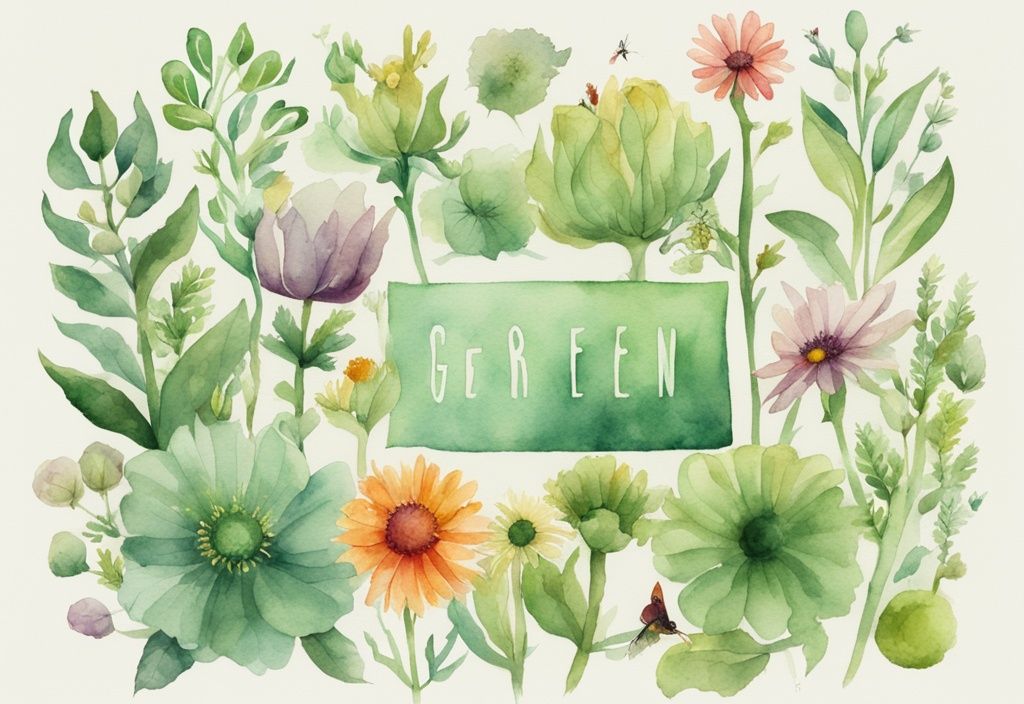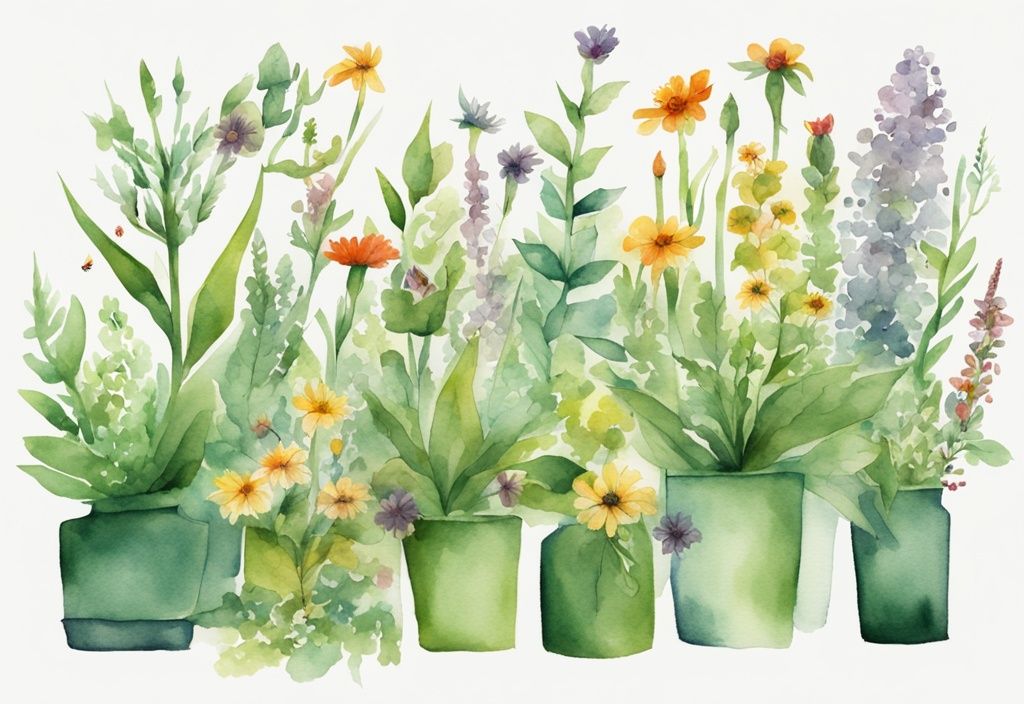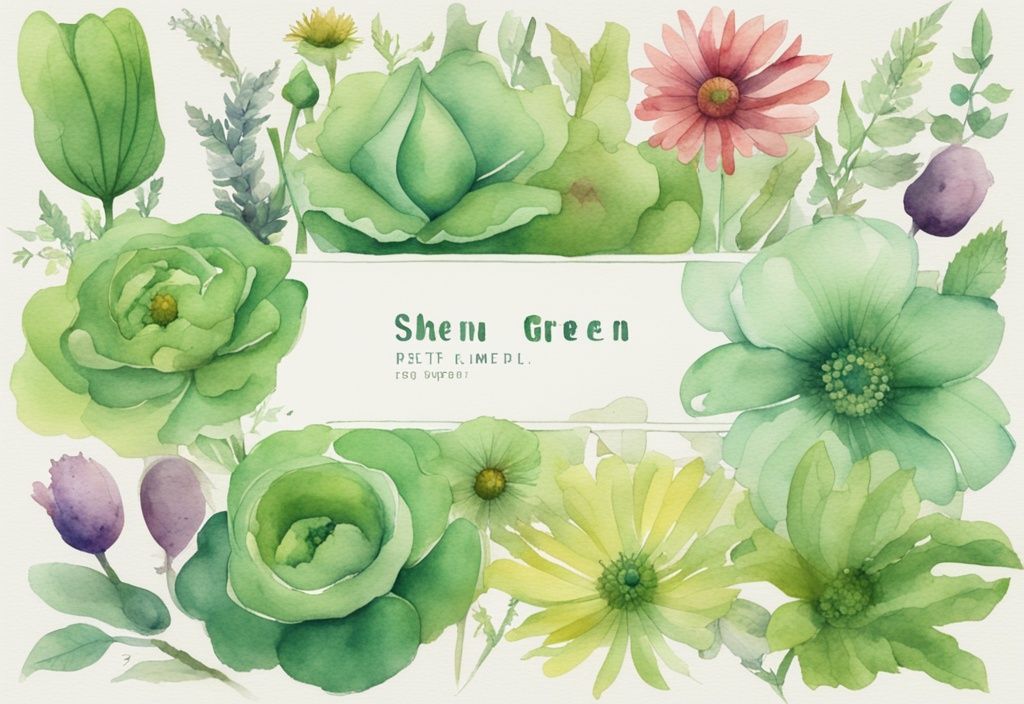25+ Flowers That Double as Natural Pest Control in Your Garden
Introduction: The Power of Flowers in Pest Control
In our journey towards embracing organic and chemical-free solutions, I’ve discovered the magic of using flowers as natural pest control. Picture this: a garden where vibrant blooms not only enhance beauty but also act as protectors against pesky intruders. This isn’t just a gardener’s fantasy—it’s a delightful reality I’ve experienced firsthand.
Flowers, often admired for their beauty, hold a secret power in pest control. Some possess natural properties that gently repel pests, offering a safe alternative to harsh chemicals. This method not only safeguards your garden but also creates a haven for pets and children. As we explore this topic together, you’ll find a variety of flowers that serve as natural pest deterrents, each with its own unique charm. Let’s embark on this journey to transform your gardening experience with these natural wonders.
Introduction: The Power of Flowers in Pest Control
Flowers are more than just pretty faces in your garden. They offer a natural, eco-friendly way to manage pests without relying on harsh chemicals. By choosing the right blooms, you can protect your plants and the environment.
Some flowers have a magical knack for keeping harmful pests at bay while inviting helpful insects. This creates a harmonious garden where pests are controlled, and pollinators flourish. For example, marigolds can fend off nematodes and other pesky insects. Meanwhile, chrysanthemums draw in ladybugs and lacewings, which feast on many garden pests.
Using flowers for pest control boosts your garden’s biodiversity. A diverse ecosystem is more robust and can better resist pest invasions. Plus, flowers attract beneficial insects that support plant health through pollination and pest management.
Incorporating flowers into your pest control plan not only makes your garden more beautiful but also nurtures a sustainable and healthy environment. By selecting the right flowers, you can cultivate a garden that is both pest-resistant and kind to the planet.
Top Flowers for Natural Pest Control
Embracing the beauty of flowers can do wonders for your garden, especially when they double as natural pest controllers. Below, you’ll find some of my favorite blooms that not only add charm but also help keep those pesky invaders at bay.
Marigolds: A Powerful Nematode Repellent
Marigolds have been a staple in my garden for years, and for good reason. Their roots contain alpha-terthienyl, a compound that naturally wards off nematodes. This makes marigolds a perfect ally in gardens troubled by these tiny pests. But their protective prowess doesn’t stop there. Marigolds are also adept at deterring a variety of insects, like greenfly, blackfly, and even tomato hornworms. If you’re growing tomatoes, peppers, or eggplants, consider marigolds your natural shield against unwanted visitors.
Chrysanthemums: Natural Pyrethrin Source
Chrysanthemums are more than just a pretty face. They produce pyrethrin, a natural insecticide that’s incredibly effective against spider mites and nematodes. In my experience, chrysanthemums also attract beneficial insects like ladybugs and lacewings. These garden helpers feast on harmful pests, fostering a balanced ecosystem. It’s a beautiful cycle of life that supports plant health and resilience.
Petunias: Attractive and Protective
Petunias are a joy to have around, offering both beauty and protection. These vibrant flowers are known to repel aphids and tomato hornworms, acting as a natural barrier in the garden. Plus, they attract hummingbirds, which not only add a splash of color but also help control pest populations. In my garden, petunias have been a delightful and effective addition, enhancing both aesthetics and biodiversity.

Nasturtiums: Trap Crop for Aphids
Nasturtiums have a special place in my heart for their role as a trap crop. They lure aphids away from more precious plants, safeguarding the garden’s health. Beyond this, nasturtiums repel squash bugs and whiteflies, and they might even keep cabbage moths at bay. Their vibrant blooms and pest-repelling properties make them a strategic choice for anyone seeking a natural approach to pest management.
Herbs That Double as Pest Control
Exploring the wonders of nature, certain herbs not only enhance our culinary adventures but also serve as natural pest repellents. These plants are a testament to the power of non-toxic living, offering simple yet effective solutions for a healthier garden environment.
Basil: A Versatile Pest Repellent
Basil, with its vibrant aroma, is more than just a kitchen staple. It’s a garden hero, warding off asparagus beetles, carrot flies, and whiteflies. I remember my first attempt at growing basil indoors; nurturing those seedlings felt like a small victory. Once they were strong enough, I moved them to a sunny, sheltered spot outside. This simple act transformed my garden into a natural fortress against pests.
Catmint: Effective Against Aphids
Catmint is a sun-loving beauty that keeps aphids at bay with its aromatic leaves. I’ve found that its rapid growth can be both a blessing and a challenge. Regular trimming ensures it doesn’t overshadow other plants, maintaining harmony in the garden. Its presence is a gentle reminder of nature’s balance, offering protection while adding a splash of green.
Garlic: Multi-Purpose Pest Control
Garlic is a true powerhouse. Its pungent aroma is a natural deterrent against aphids, cabbage moths, and even rabbits. Planting garlic in well-drained soil with plenty of sunlight has been my go-to strategy. I’ve learned to remove the flower stems as it matures, channeling energy into bulb development. This not only boosts its pest-repelling abilities but also enriches my kitchen with flavorful harvests.
Mint: A Strong Aromatic Repellent
Mint’s robust scent is a formidable barrier against mosquitoes, fleas, moths, and more. Its aggressive growth can be overwhelming, so I prefer keeping it in pots. This way, I enjoy its benefits without worrying about it taking over the garden. It’s a small step towards a balanced ecosystem, where every plant plays its part.
Onions: Easy-to-Grow Pest Deterrent
Onions are a straightforward choice for natural pest control, effectively deterring aphids, carrot flies, and rabbits. Growing them from bulbs in spring is a simple task, yet it yields great rewards. Throughout summer and autumn, onions stand as a reliable defense, embodying the ease and effectiveness of non-toxic gardening. Their presence in my garden is a testament to the beauty of simplicity and sustainability.
Additional Plants for Natural Pest Control
Exploring natural pest control through the power of plants can transform your garden into a haven of health and harmony. Each plant offers unique benefits, creating a balanced ecosystem that thrives without toxic chemicals.
Chives: A Natural Deterrent for Aphids
Chives have always held a special place in my heart, not just for their culinary charm but for their pest-repelling prowess. Their distinct onion scent acts as a natural barrier against aphids, offering protection to nearby plants like chrysanthemums and tomatoes. I’ve seen firsthand how chives can enhance the health and vigor of their neighbors. Plus, those lovely purple flowers are not only edible but also invite bees, boosting pollination and biodiversity in your garden.
Lavender: Aromatic Defense Against Pests
Lavender’s soothing fragrance is a personal favorite, yet its pest-repelling abilities are what truly make it a garden hero. Its intense aroma wards off moths, fleas, flies, mosquitoes, and even rodents. I’ve learned to be mindful, though, as lavender doesn’t play well with mint or impatiens, potentially stunting their growth. By adding lavender to your garden, you’re not just enjoying its calming scent but also embracing a natural form of pest control.

Sunflowers, Geraniums, and More
Sunflowers have a unique charm, standing tall and vibrant, attracting beneficial insects like bees and butterflies. These visitors help keep aphid populations in check, making sunflowers a dual-purpose delight. Geraniums, meanwhile, are a gardener’s ally against cabbageworms, corn earworms, Japanese beetles, and leaf beetles. Their ease of growth and versatility make them a staple in natural pest management.
Other flowers like asters, calendula, and cosmos are invaluable too. For those interested in kitchen safety, it’s important to ask, is Magnalite cookware safe for your home? They draw in beneficial insects, which naturally control pest populations, fostering a thriving garden ecosystem. Embracing these plants not only beautifies your space but also supports a healthier, more sustainable environment.
Choosing the Right Flower for Your Garden
Selecting flowers for natural pest control in your garden can be a rewarding journey. It all starts with understanding the specific pests you want to repel and the beneficial insects you wish to attract. This thoughtful approach helps your garden flourish without relying on chemicals.
Consider your garden’s unique conditions. Think about the climate, soil type, and sunlight. For example, marigolds are fantastic for keeping nematodes at bay and love sunny, well-drained spots. On the other hand, chrysanthemums, which thrive in shade, can naturally fend off spider mites and nematodes.
Companion planting is another wonderful technique. By placing flowers alongside vegetables and other plants, you create a balanced ecosystem. Imagine nasturtiums near your cabbages, drawing aphids away, or petunias safeguarding your tomatoes from hornworms. This practice not only deters pests but also boosts biodiversity, fostering a resilient garden.
By weaving these elements into your gardening plan, you unlock the potential of flowers as natural pest control allies. This approach not only nurtures a healthier ecosystem but also allows you to enjoy a vibrant, thriving garden.
Benefits and Risks of Using Flowers for Pest Control
Using flowers as a natural pest control method offers a delightful blend of benefits, perfect for those of us who cherish eco-friendly gardening. One of the most rewarding aspects is the significant cutback on chemical pesticides. By letting flowers do the work, we can gently reduce our environmental footprint and nurture a healthier ecosystem. This practice not only safeguards our immediate garden space but also supports the broader ecological community.
Moreover, flowers enhance biodiversity. Those that repel pesky insects often invite beneficial ones, like ladybugs and hoverflies. These little allies are essential in keeping pest populations in check, naturally reducing the need for chemical solutions. Plus, a variety of plants can boost soil health and resilience, encouraging robust plant growth.
However, there are some risks to consider. One challenge is the potential for attracting unwanted pests. While many flowers excel at keeping specific insects at bay, they might unintentionally lure others. Regular garden checks are crucial to maintaining balance.

Invasive growth is another consideration. Some flowers, like mint, can spread rapidly if not managed well, competing with other plants for resources. To prevent this, it’s important to practice good garden management, such as regular pruning and strategic planting.
Ultimately, the key to success lies in careful planning and vigilant monitoring. By choosing the right plants and staying attentive to garden dynamics, we can harness the power of flowers to cultivate a vibrant, pest-resistant haven.
FAQ
What are the benefits of using flowers for pest control?
Using flowers as a natural pest control method is a gentle yet effective way to protect your garden. They not only replace harsh chemicals but also invite a vibrant array of life into your garden. Personally, I’ve seen how flowers can transform a space, enriching biodiversity and fostering a thriving ecosystem. By attracting beneficial insects, flowers enhance plant health and resilience, creating a sustainable environment that feels alive and balanced.
Can flowers attract beneficial insects?
Absolutely! Flowers like marigolds, chrysanthemums, and petunias are like magnets for beneficial insects. I’ve watched with delight as ladybugs, lacewings, and hoverflies dance around my garden, each playing their part in keeping pest populations in check. This natural partnership reduces the need for chemical solutions, making your garden a haven for both plants and insects.
Are there any risks associated with using flowers as pest control?
While the benefits are plentiful, it’s important to be mindful of potential risks. Sometimes, flowers can attract unwanted pests or grow invasively. I’ve learned that successful pest control with flowers requires a bit of attention and care. Regular monitoring and management help maintain a balanced garden, ensuring that it remains a beautiful and effective sanctuary.
Conclusion: Embrace the Power of Flowers for Pest Control
Flowers offer a sustainable and effective way to manage pests naturally, providing an eco-friendly alternative to harsh chemical pesticides. By weaving the right blooms into your garden, you can naturally ward off harmful pests while inviting beneficial insects that help your garden thrive. This method not only cuts down on synthetic chemicals but also boosts your garden’s biodiversity, encouraging healthier plant growth and resilience.
Choosing the right flowers for pest control means understanding the pests you want to manage and the beneficial insects you hope to attract. For instance, marigolds are fantastic for keeping nematodes and various flying insects at bay. Chrysanthemums, on the other hand, are a natural source of pyrethrin, which is effective against spider mites. Petunias and nasturtiums pull double duty by repelling pests and attracting pollinators like hummingbirds.
Incorporating the beauty and utility of flowers into your garden can turn it into a lively, pest-resistant sanctuary. By thoughtfully planning and selecting the right plants, you can protect your crops naturally while enjoying the added beauty that flowers bring. This harmonious approach to pest control not only safeguards your garden but also supports a healthier environment, aligning perfectly with the principles of non-toxic living.
Hi, I’m Olivia Green, the voice behind nontoxicways.com. I’m passionate about helping you make the shift to a healthier, non-toxic lifestyle without feeling overwhelmed. I love sharing my personal journey, from small changes to big transformations, along with practical tips that make it all feel doable. My goal is to inspire and guide you toward a lifestyle that benefits both your well-being and the planet. Let’s take this journey together, one simple step at a time!














Post Comment